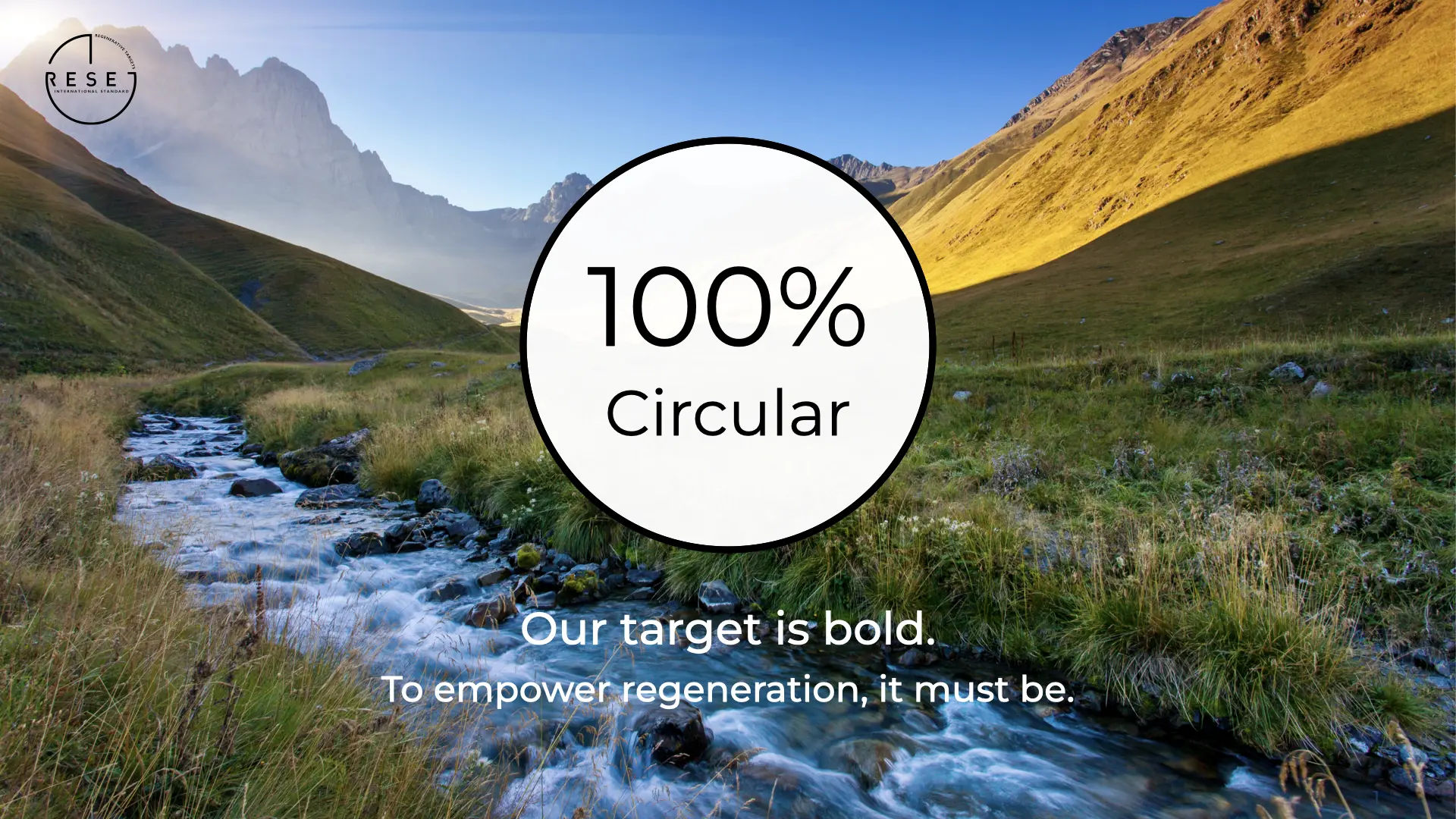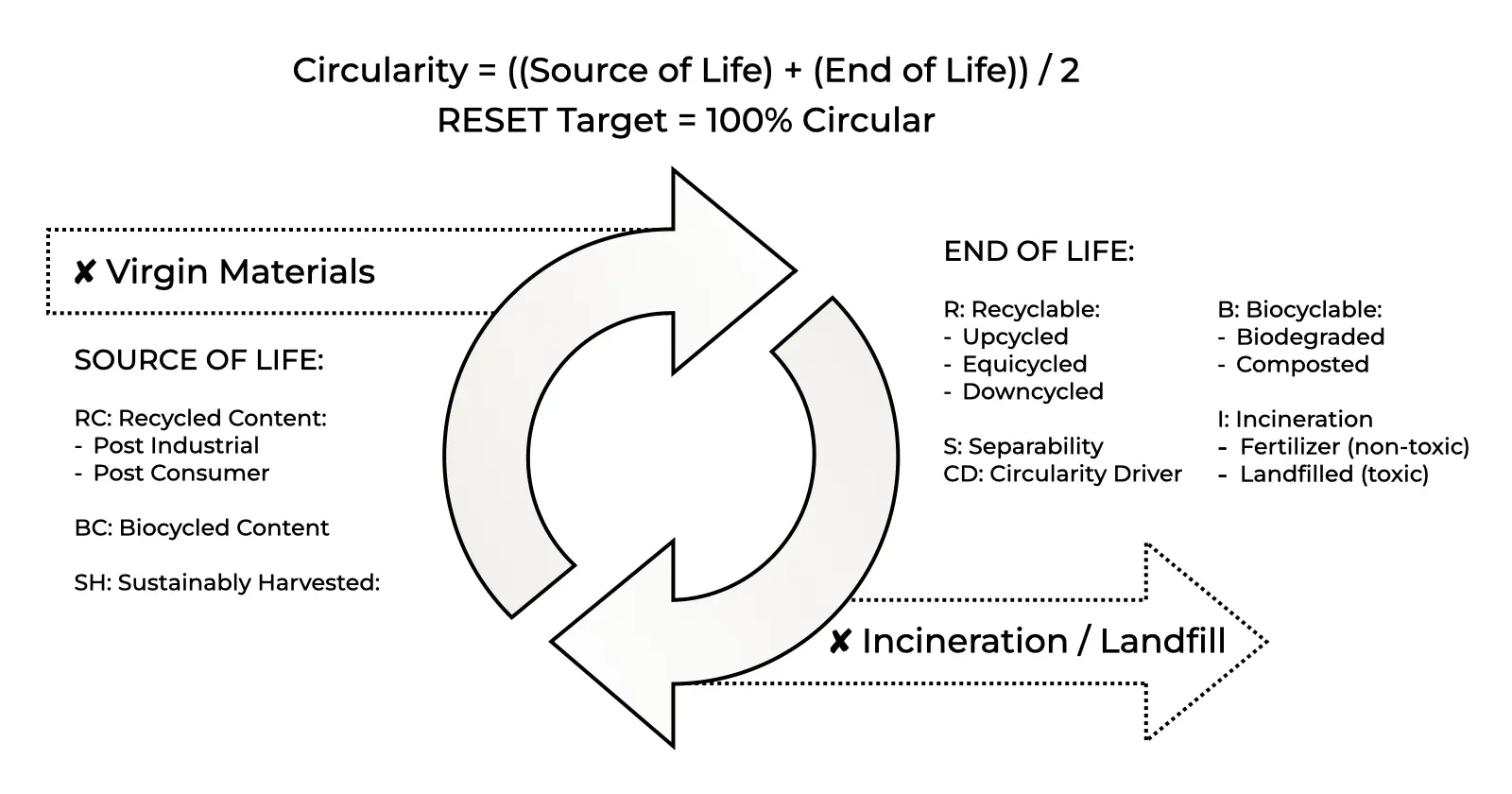RESET® Embodied Circularity
RESET Embodied Circularity is a standard and certification program that measures the rate of circularity associated with materials, products and assembly processes, throughout the life cycle of built environments, with the goal of identifying how to improve.

The RESET Standard distinguishes between Embodied Circularity and Reuse. Embodied Circularity quantifies the ability of raw materials to be infinitely regenerated, at a rate that supports life on Earth. Embodied circularity considers the source-of-life and end-of-life of raw materials used for the manufacturing of new products. Embodied Circularity is the subject of this impact module and this chapter.
Reuse quantifies the materials and products being reused from other projects. Reuse is a strategy that helps ensure the intended lifespan of materials and products is fulfilled. As a ‘life fulfillment strategy” strategy, reuse exists between the source-of-life and end-of-life stages of all raw materials. Reuse does not impact the intrinsic nature (embodied circularity) of materials. Although Reuse is not part of Embodied Circularity, a calculation method for Reuse is provided within this document.
The assessment of embodied circularity for projects begins with the assessment of individual products. The RESET Embodied Standard provides a quantitative assessment of material or “source of life” inflows and how these inform “end of life” outflows. Source-of-Life and End-of-Life scenarios each represent 50% of the overall circularity result.
